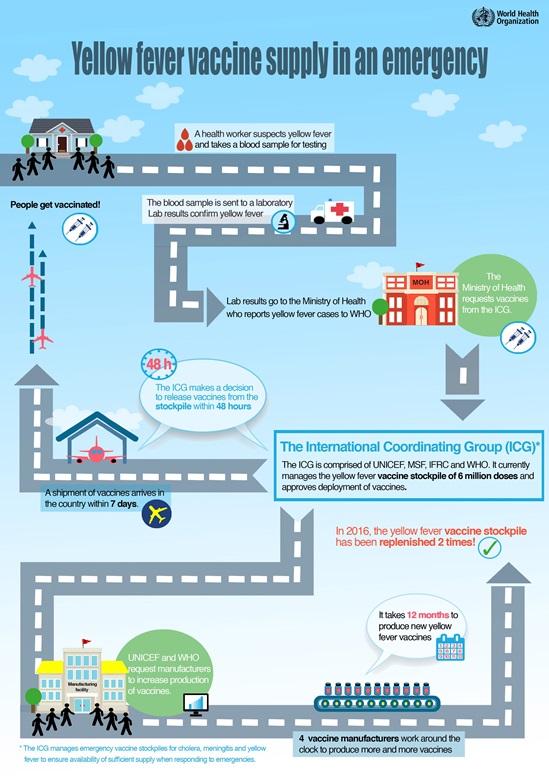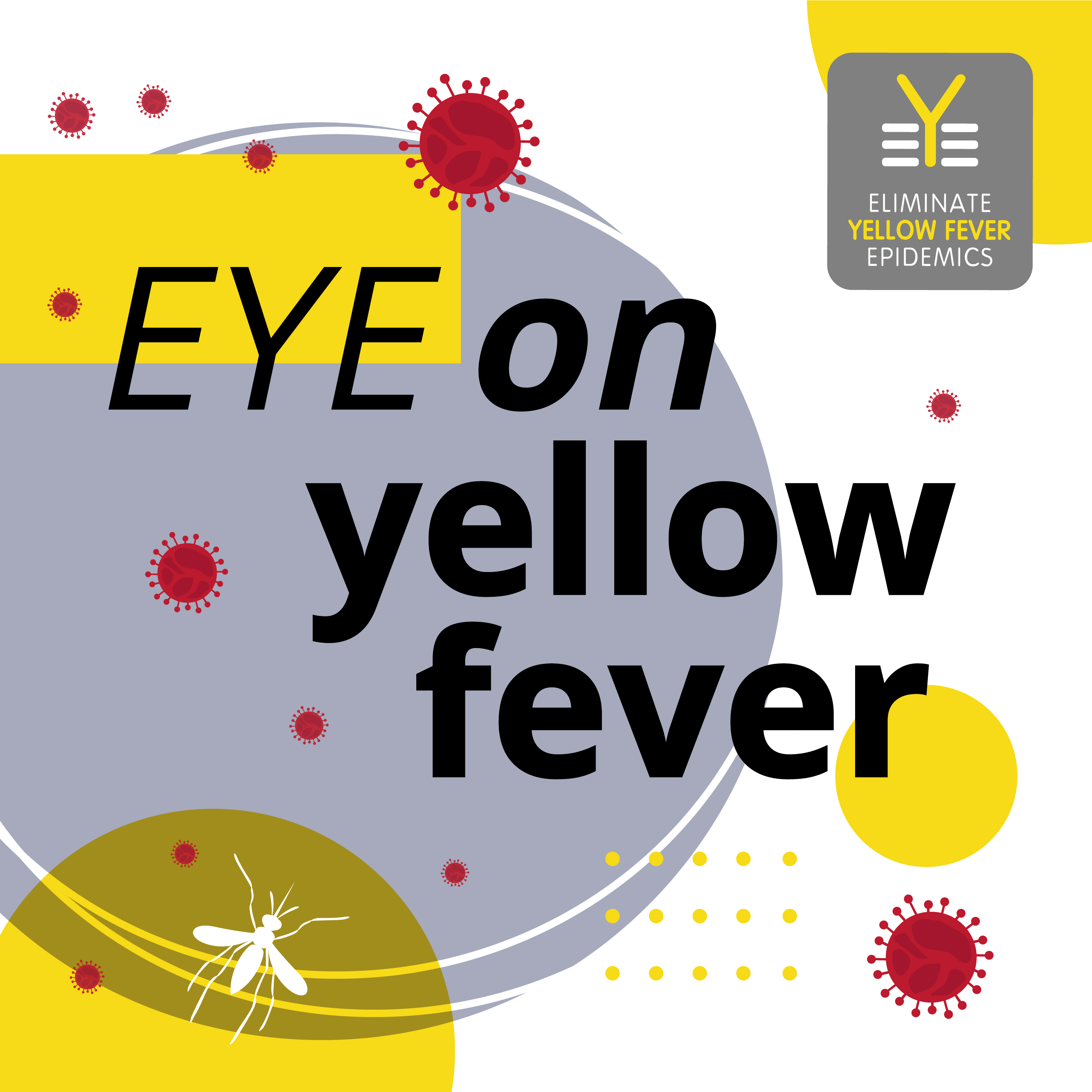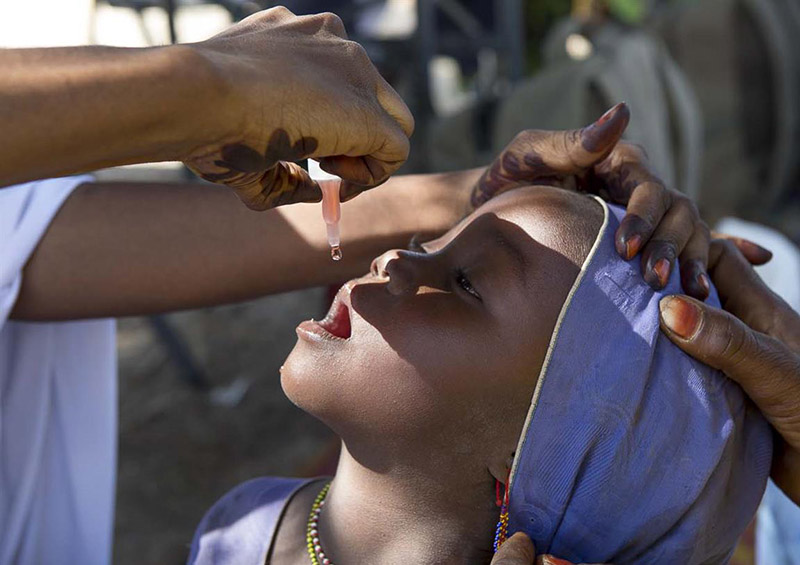Yellow fever
Yellow fever is a viral disease that is transmitted to humans by the bites of infected mosquitoes. It is prone to epidemics and is preventable with a vaccine.
These day-biting mosquitoes breed around houses (domestic), in forests or jungles (wild), or in both habitats (semi-domestic). Yellow fever is a high-impact, high-threat disease, with a risk of international spread, representing a potential threat to global health security.
There are 3 types of transmission cycles:
- Sylvatic (or jungle) yellow fever spreads when monkeys are bitten by wild mosquitoes that pass the virus on to other monkeys and humans.
- Intermediate yellow fever spreads when semi-domestic mosquitoes infect both monkeys and people. This is the most common type of outbreak in Africa.
- Urban yellow fever can cause large epidemics when infected people introduce the virus into heavily populated areas with high mosquito density and where people have little immunity.
Occasionally, infected travellers have exported cases to countries that are free of yellow fever. However, the disease can only spread easily to a new country if there are mosquito species able to transmit it, specific climatic conditions, and the animal reservoir needed to maintain it.
Yellow fever can present with a wide range of symptoms and severity. Once contracted, the yellow fever virus incubates in the body for 3–6 days. Many people do not experience symptoms, but when these do occur, the most common are fever, muscle pain with prominent backache, headache, loss of appetite, and nausea or vomiting. In most cases, symptoms disappear after 3–4 days.
A small percentage of patients enter a second, more toxic phase within 24 hours of recovering from initial symptoms. High fever returns and several body systems are affected, usually the liver and kidneys.
In this phase, people are likely to develop jaundice (yellowing of the skin and eyes, hence the name yellow fever), dark urine, and abdominal pain with vomiting. Bleeding can occur from the mouth, nose, eyes, or stomach. Half of these patients die within 7–10 days.
Yellow fever is difficult to diagnose, especially during the early stages. More severe cases can be confused with severe malaria, leptospirosis, viral hepatitis (especially fulminant forms), other haemorrhagic fevers, infection with other flaviviruses (such as dengue haemorrhagic fever) and poisoning. Polymerase chain reaction (PCR) testing in blood and urine can sometimes detect the virus in early stages of the disease. In later stages, testing to identify antibodies is needed (IgM).
Yellow fever infections can cause serious illness and can be fatal in severe cases. Early supportive treatment in hospitals improves survival rates. There is currently no specific anti-viral drug for yellow fever, but specific care to treat dehydration, fever, and liver and kidney failure improves outcomes. Associated bacterial infections can be treated with antibiotics. Patients need to stay under mosquito nets during the day to limit the risk of spreading to others through mosquito bites.
Vaccination is the single most important measure for preventing yellow fever. The prevention of outbreaks can only be achieved if the majority of the population is immunized. The yellow fever vaccine is safe and affordable, and a single dose provides life-long immunity against the disease. People who recover from yellow fever infection are also protected for life. Read more about the yellow fever vaccine.
Mosquito control can also help to prevent yellow fever and is vital in situations where vaccination coverage is low or the vaccine is not immediately available. Mosquito control includes eliminating sites where mosquitoes can breed and killing adult mosquitoes and larvae by using insecticides in areas with high mosquito density.
Community involvement through activities, such as cleaning household drains and covering water containers where mosquitoes can breed is an important and effective way to control mosquitoes.



















